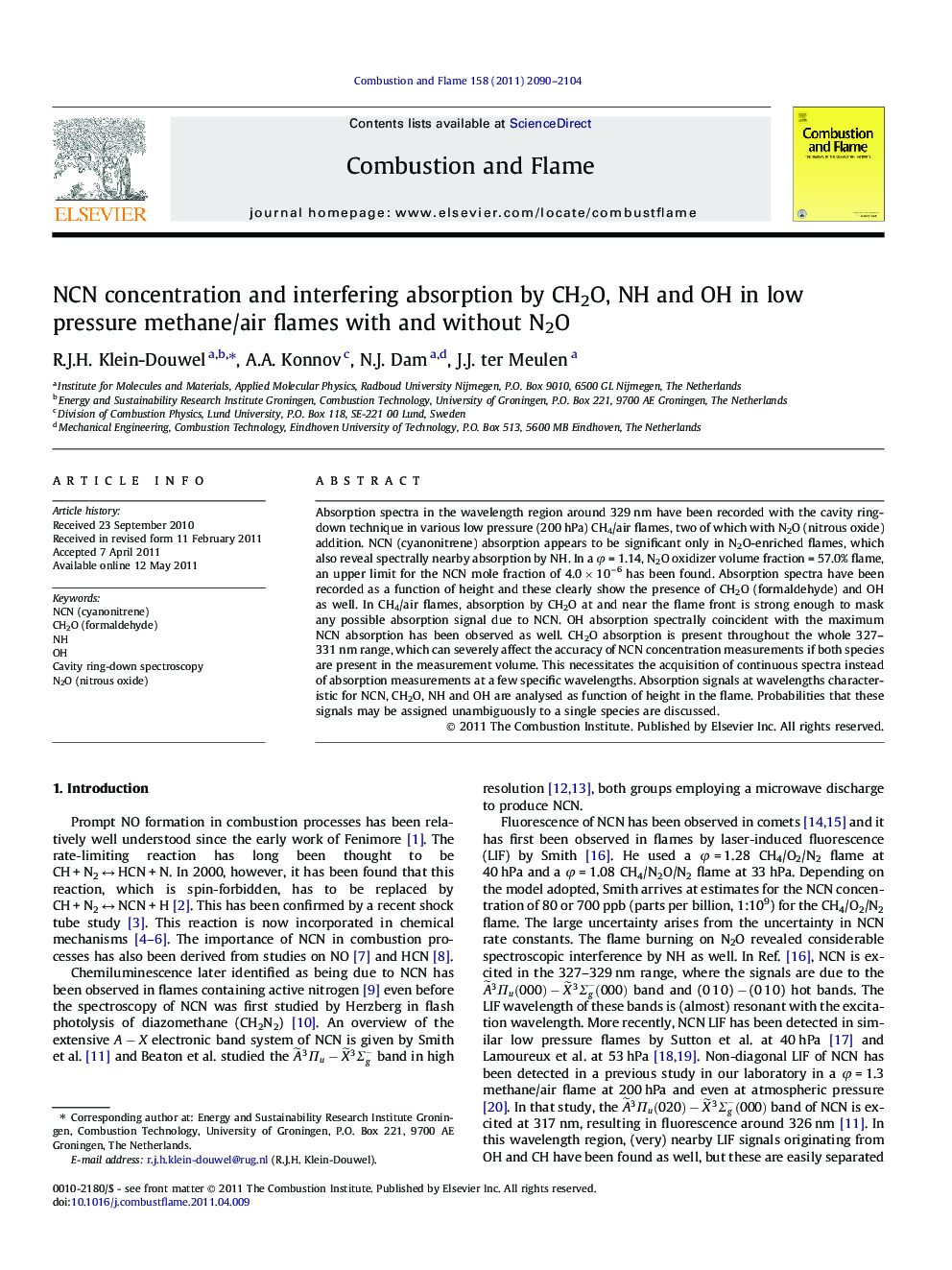| Article ID | Journal | Published Year | Pages | File Type |
|---|---|---|---|---|
| 167363 | Combustion and Flame | 2011 | 15 Pages |
Absorption spectra in the wavelength region around 329 nm have been recorded with the cavity ring-down technique in various low pressure (200 hPa) CH4/air flames, two of which with N2O (nitrous oxide) addition. NCN (cyanonitrene) absorption appears to be significant only in N2O-enriched flames, which also reveal spectrally nearby absorption by NH. In a φ = 1.14, N2O oxidizer volume fraction = 57.0% flame, an upper limit for the NCN mole fraction of 4.0 × 10−6 has been found. Absorption spectra have been recorded as a function of height and these clearly show the presence of CH2O (formaldehyde) and OH as well. In CH4/air flames, absorption by CH2O at and near the flame front is strong enough to mask any possible absorption signal due to NCN. OH absorption spectrally coincident with the maximum NCN absorption has been observed as well. CH2O absorption is present throughout the whole 327–331 nm range, which can severely affect the accuracy of NCN concentration measurements if both species are present in the measurement volume. This necessitates the acquisition of continuous spectra instead of absorption measurements at a few specific wavelengths. Absorption signals at wavelengths characteristic for NCN, CH2O, NH and OH are analysed as function of height in the flame. Probabilities that these signals may be assigned unambiguously to a single species are discussed.
